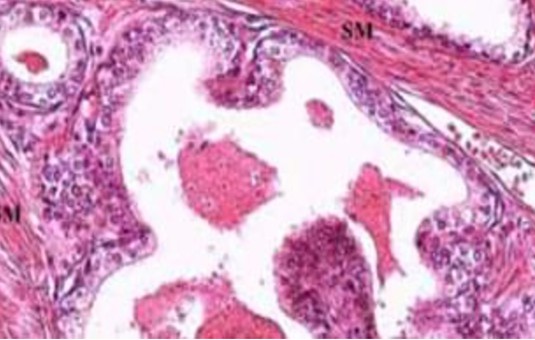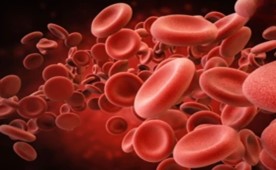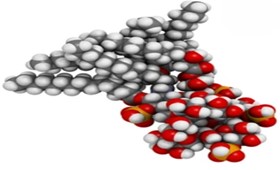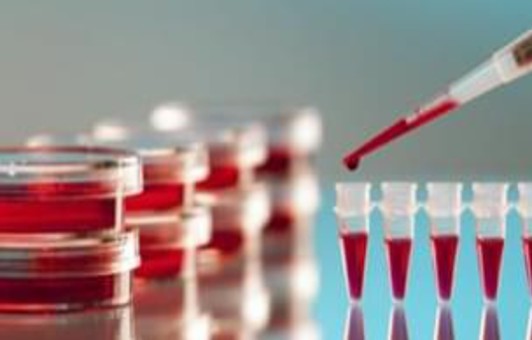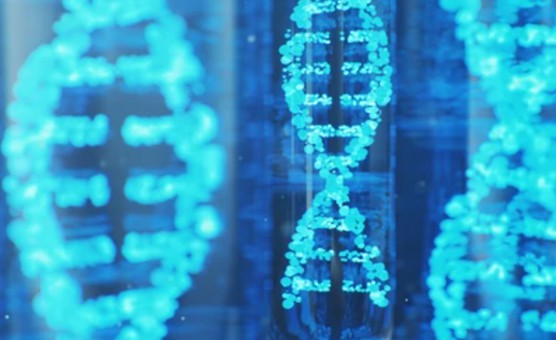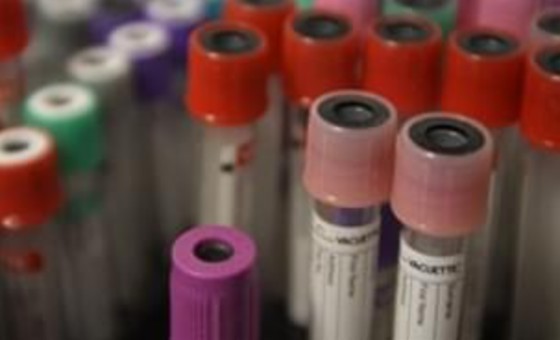Biospecimen Processing Protocol
GUIDELINE
- Specimens are processed according to the study design and the methods most appropriate for preserving the analytes of interest. For a particular specimen type and analysis, several processing methods may be appropriate.
- A major biorepository activity that is amenable to automation is aliquoting. DNA in solution, as well as for example serum and plasma, must be stored in volumes suitable for downstream laboratory analyses.
METHODS
Blood
- The processing method used for blood specimens depends on the laboratory analyses to be performed, whole blood can be separated into fractions, such as plasma, serum, buffy coat, red blood cells.
- Whole blood may also be cryopreserved as an efficient and cost-effective approach to centralized processing and storage of viable cells in large- scale epidemiological studies.
- Cryopreservation is a cost-effective way of preserving viable Iymphocytes for subsequent recovery of DNA, or for Epstein- Barr Virus (EBV) transformation to create Iymphoblastoid cell lines as a source of unlimited amounts of DNA.
Tissue
- Specimens resected specifically for research may be either processed in the operating room or pathology suite, shortly after the time of collection, or may be transported to the expository for processing, depending upon the requirements of the specific protocol.
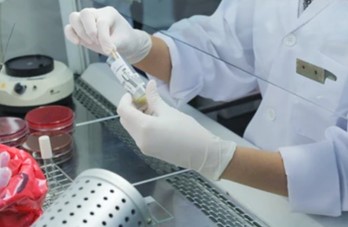
Urine
- Processing of urine before storage is fairly straightforward. The primary decision is the size of the aliquots to be stored and is based on the expected analyses.
- If the analytes are stable to thaw / refreeze cycles then larger aliquots can be stored.
Saliva / Buccal Cell from Mouthwash
- Buccal cells collected using the mouthwash protocol are processed by centrifugation of the cell suspension, resuspension in a buffer, and either processed immediately or frozen for future use.
- Usually, additional processing involves DNA extraction.
Aliquoting
- Dividing specimens into smaller sample aliquots is usually necessary to preserve them in volumes useful for routine analyses.
- The aliquoting protocol should be designed only to store the number of aliquots necessary for the intended analyses, plus additional long-term archival samples that will be available for unforeseen uses.
- Although many analytes, such as steroid hormones are stable, other analyses may be affected by one or more thaw- freeze cycles.
NOTES
- Cryopreservation typically involves the use of a cryoprotectant, such as dimethyl sulfoxide (DMSO). However, commercial cryoprotectants that are less toxic have been developed.
- A special consideration in processing buccal cell DNA is the high percentage of bacterial DNA present in these specimens, which requires special quantitation by real- time PCR.
- In developing an aliquoting protocol, the consequences of repeated thawing and refreezing cycles should be considered.
RELATED PRODUCTS & SERVICES
Reference
- Vaught JB and Henderson MK. (2011). "Biological sample collection, processing, storage and information management." IARC Sci Publ. (163), 23-42.
For research use only. Not for any other purpose.
Resources
- FAQ
- Protocol
- Cell Culture Guide
- Technical Bulletins
-
Explore & Learn
-
Cell Biology
- CHO Cell Line Development
- How to Isolate PBMCs from Whole Blood?
- How to Handle Mycoplasma in Cell Culture?
- Comparison of the MSCs from Different Sources
- T Cell Activation and Expansion
- How to Isolate and Analyze Tumor-Infiltrating Leukocytes?
- Troubleshooting Cell Culture Contamination: A Comprehensive Guide
- Contamination of Cell Cultures & Treatment
- Generation and Applications of Neural Stem Cells
- Stem Cell Markers
- What are the Differences Between M1 and M2 Macrophages?
- What Cell Lines Are Commonly Used in Biopharmaceutical Production?
- Mesenchymal Stem Cells: A Comprehensive Exploration
- Tips For Cell Cryopreservation
- Organoid Differentiation from Induced Pluripotent Stem Cells
- Quantification of Cytokines
- How to Assess the Migratory and Invasive Capacity of Cells?
- Enrichment, Isolation and Characterization of Circulating Tumor Cells (CTCs)
- Strategies for Enrichment of Circulating Tumor Cells (CTCs)
- Multi-Differentiation of Peripheral Blood Mononuclear Cells
- How to Decide Between 2D and 3D Cell Cultures?
- Neural Differentiation from Induced Pluripotent Stem Cells
- Circulating Tumor Cells as Cancer Biomarkers in the Clinic
- CFU Assay for Hematopoietic Cell
- How to Eliminate Mycoplasma From Cell Cultures?
- What Are Myeloid Cell Markers?
- Monocytes vs. Macrophages
- How to Detect and Remove Endotoxins in Biologics?
- Comparison of Different Methods to Measure Cell Viability
- How to Start Your Culture: Thawing Frozen Cells
- Cryopreservation of Cells Step by Step
- What are PBMCs?
- Biomarkers and Signaling Pathways in Tumor Stem Cells
- Techniques for Cell Separation
- Guidelines for Cell Banking to Ensure the Safety of Biologics
- Cell Cryopreservation Techniques and Practices
- T Cell, NK Cell Differentiation from Induced Pluripotent Stem Cells
- Major Problems Caused by the Use of Uncharacterized Cell Lines
- Direct vs. Indirect Cell-Based ELISA
- Cell Culture Medium
- What Is Cell Proliferation and How to Analyze It?
- IL-12 Family Cytokines and Their Immune Functions
- Critical Quality Attributes and Assays for Induced Pluripotent Stem Cells
- Human Primary Cells: Definition, Assay, Applications
- What are Mesothelial Cells?
- How to Scale Up Single-Cell Clones?
- STR Profiling—The ID Card of Cell Line
- Comparison of Several Techniques for the Detection of Apoptotic Cells
- Unveiling the Molecular Secrets of Adipogenesis in MSCs
- Tumor Stem Cells: Identification, Isolation and Therapeutic Interventions
- Isolation, Expansion, and Analysis of Natural Killer Cells
- Spheroid vs. Organoid: Choosing the Right 3D Model for Your Research
- Adherent and Suspension Cell Culture
- Understanding Immunogenicity Assays: A Comprehensive Guide
- From Collection to Cure: How ACT Works in Cancer Immunotherapy
- How to Maximize Efficiency in Cell-Based High-Throughput Screening?
- 3D-Cell Model in Cell-Based Assay
- Role of Cell-Based Assays in Drug Discovery and Development
- Immunogenicity Testing: ELISA and MSD Assays
- What are White Blood Cells?
- Types of Cell Therapy for Cancer
- What Are the Pros and Cons of Adoptive Cell Therapy?
- Eosinophils vs. Basophils vs. Neutrophils
- 3D-Cell Model in Cell-Based Assay
- Immunogenicity Testing: ELISA and MSD Assays
- Cultivated Meat: What to Know?
- A Complete Guide to Immortalized Cancer Cell Lines in Cancer Research
- Cell Viability, Proliferation and Cytotoxicity Assays
- What Are CAR T Cells?
- From Blur to Clarity: Solving Resolution Limits in Live Cell Imaging
- Exploring Cell Dynamics: Migration, Invasion, Adhesion, Angiogenesis, and EMT Assays
- Live Cell Imaging: Unveiling the Dynamic World of Cellular Processes
- Optimization Strategies of Cell-Based Assays
- Overview of Cell Apoptosis Assays
- Key Techniques in Primary, Immortalized and Stable Cell Line Development
- From Primary to Immortalized: Navigating Key Cell Lines in Biomedical Research
- From Blur to Clarity: Solving Resolution Limits in Live Cell Imaging
- Cell-Based High-Throughput Screening Techniques
- Mastering Cell Culture and Cryopreservation: Key Strategies for Optimal Cell Viability and Stability
- Cell Immortalization Step by Step
- Optimization Strategies of Cell-Based Assays
- Live Cell Imaging: Unveiling the Dynamic World of Cellular Processes
-
Histology
- Troubleshooting in Fluorescent Staining
- Fluorescent Nuclear Staining Dyes
- Immunohistochemistry Controls
- Overview of the FFPE Cell Pellet Product Lines
- Guides for Live Cell Imaging Dyes
- Instructions for Tumour Tissue Collection, Storage and Dissociation
- Multiple Animal Tissue Arrays
- Tips for Choosing the Right Protease Inhibitor
- Mitochondrial Staining
- Stains Used in Histology
- Cell Lysates: Composition, Properties, and Preparation
- Immunohistochemistry Troubleshooting
- Cell and Tissue Fixation
- Comparison of Membrane Stains vs. Cell Surface Stains
- Microscope Platforms
- How to Apply NGS Technologies to FFPE Tissues?
- Overview of Common Tracking Labels for MSCs
- How to Choose the Right Antibody for Immunohistochemistry (IHC)
- How to Begin with Multiplex Immunohistochemistry (mIHC)
- Common Immunohistochemistry Stains and Their Role in Cancer Diagnosis
- Serum vs. Plasma
- Comparing IHC, ICC, and IF: Which One Fits Your Research?
- Multiplexing Immunohistochemistry
- From Specimen to Slide: Core Methods in Histological Practice
- What You Must Know About Neuroscience IHC?
- Modern Histological Techniques
- How Immunohistochemistry Makes the Invisible Brain Visible?
- Histological Staining Techniques: From Traditional Chemical Staining to Immunohistochemistry
-
Exosome
- What's the Potential of PELN in Disease Treatment?
- Classification, Isolation Techniques and Characterization of Exosomes
- Emerging Technologies and Methodologies for Exosome Research
- How to Enhancement Exosome Production?
- How to characterize exosomes?
- How to Label Exosomes?
- How to Efficiently Utilize MSC Exosomes for Disease Treatment?
- Exosomes as Emerging Biomarker Tools for Diseases
- How to Apply Exosomes in Clinical?
- How to Perform Targeted Modification of Exosomes?
- Exosome Quality Control: How to Do It?
- Exosome Transfection for Altering Biomolecular Delivery
- Summary of Approaches for Loading Cargo into Exosomes
- Collection of Exosome Samples and Precautions
- Techniques for Exosome Quantification
- How do PELN Deliver Drugs?
- Current Research Status of Milk Exosomes
- Common Techniques for Exosome Nucleic Acid Extraction
- How Important are Lipids in Exosome Composition and Biogenesis?
- What are the Functions of Exosomal Proteins?
- Exosome Size Measurement
- The Role of Exosomes in Cancer
- Applications of MSC-EVs in Immune Regulation and Regeneration
- Unraveling Biogenesis and Composition of Exosomes
- Production of Exosomes: Human Cell Lines and Cultivation Modes
- Exosome Antibodies
-
ISH/FISH
- ISH probe labeling method
- Reagents Used in FISH Experiments
- CARD-FISH: Illuminating Microbial Diversity
- Comprehensive Comparison of IHC, CISH, and FISH Techniques
- RNAscope ISH Technology
- Comparative Genomic Hybridization and Its Applications
- What are the Differences between FISH, aCGH, and NGS?
- What are Single, Dual, and Multiplex ISH?
- Overview of Oligo-FISH Technology
- Differences Between DNA and RNA Probes
- What Is the Use of FISH in Solid Tumors?
- Mapping of Transgenes by FISH
- What Types of Multicolor FISH Probe Sets Are Available?
- FISH Tips and Troubleshooting
- Multiple Options for Proving Monoclonality
- FISH Techniques for Biofilm Detection
- Whole Chromosome Painting Probes for FISH
- Telomere Length Measurement Methods
- Guidelines for the Design of FISH Probes
- Overview of Common FISH Techniques
- Multiple Approaches to Karyotyping
- In Situ Hybridization Probes
- Different Types of FISH Probes for Oncology Research
- How to Use FISH in Hematologic Neoplasms?
- Small RNA Detection by ISH Methods
- ImmunoFISH: Integrates FISH and IL for Dual Detection
- 9 ISH Tips You Can't Ignore
-
Toxicokinetics & Pharmacokinetics
- Toxicokinetics vs. Pharmacokinetics
- Physical and Chemical Properties of Drugs and Calculations
- Pharmacokinetics of Therapeutic Peptides
- Organoids in Drug Discovery: Revolutionizing Therapeutic Research
- What Are Metabolism-Mediated Drug-Drug Interactions?
- How to Improve Drug Plasma Stability?
- How Is the Cytotoxicity of Drugs Determined?
- How to Improve the Pharmacokinetic Properties of Peptides?
- How to Conduct a Bioavailability Assessment?
- Experimental Methods for Identifying Drug-Drug Interactions
- Organ-on-a-Chip Systems for Drug Screening
- Key Considerations in Toxicokinetic
- Pharmacokinetics Considerations for Antibody Drug Conjugates
- Traditional vs. Novel Drug Delivery Methods
- Comparison of MDCK-MDR1 and Caco-2 Cell-Based Permeability Assays
- What factors influence drug distribution?
- How to Design and Synthesize Antibody Drug Conjugates?
- Methods of Parallel Artificial Membrane Permeability Assays
- Key Factors Influencing Brain Distribution of Drugs
- Unraveling the Role of hERG Channels in Drug Safety
- Predictive Modeling of Metabolic Drug Toxicity
- The Rise of In Vitro Testing in Drug Development
- Overview of In Vitro Permeability Assays
- How to Improve Drug Distribution in the Brain
- Effects of Cytochrome P450 Metabolism on Drug Interactions
- What Are Compartment Models in Pharmacokinetics?
- What Is the Role of the Blood-Brain Barrier in Drug Delivery?
- Parameters of Pharmacokinetics: Absorption, Distribution, Metabolism, Excretion
- What are the Pharmacokinetic Properties of the Antisense Oligonucleotides?
- From Cells to Systems: Modern Approaches to Disease Modeling
- How Genotoxicity Testing Guides Safer Drug Development
- What Is Genotoxicity in Pharmacology? Mechanisms and Sources
- What Are the Best Methods to Test Cardiotoxicity?
- Why Cardiotoxicity Matters in R&D?
-
Disease Models
- Preclinical Models of Acute Liver Failure
- What Human Disease Models Are Available for Drug Development?
- Overview of Cardiovascular Disease Models in Drug Discovery
- Animal Models of Neurodegenerative Diseases
- Summary of Advantages and Limitations of Different Oncology Animal Models
- Disease Models of Diabetes Mellitus
- Why Use PDX Models for Cancer Research?
-
Cell Biology
- Life Science Articles
- Download Center
- Trending Newsletter
